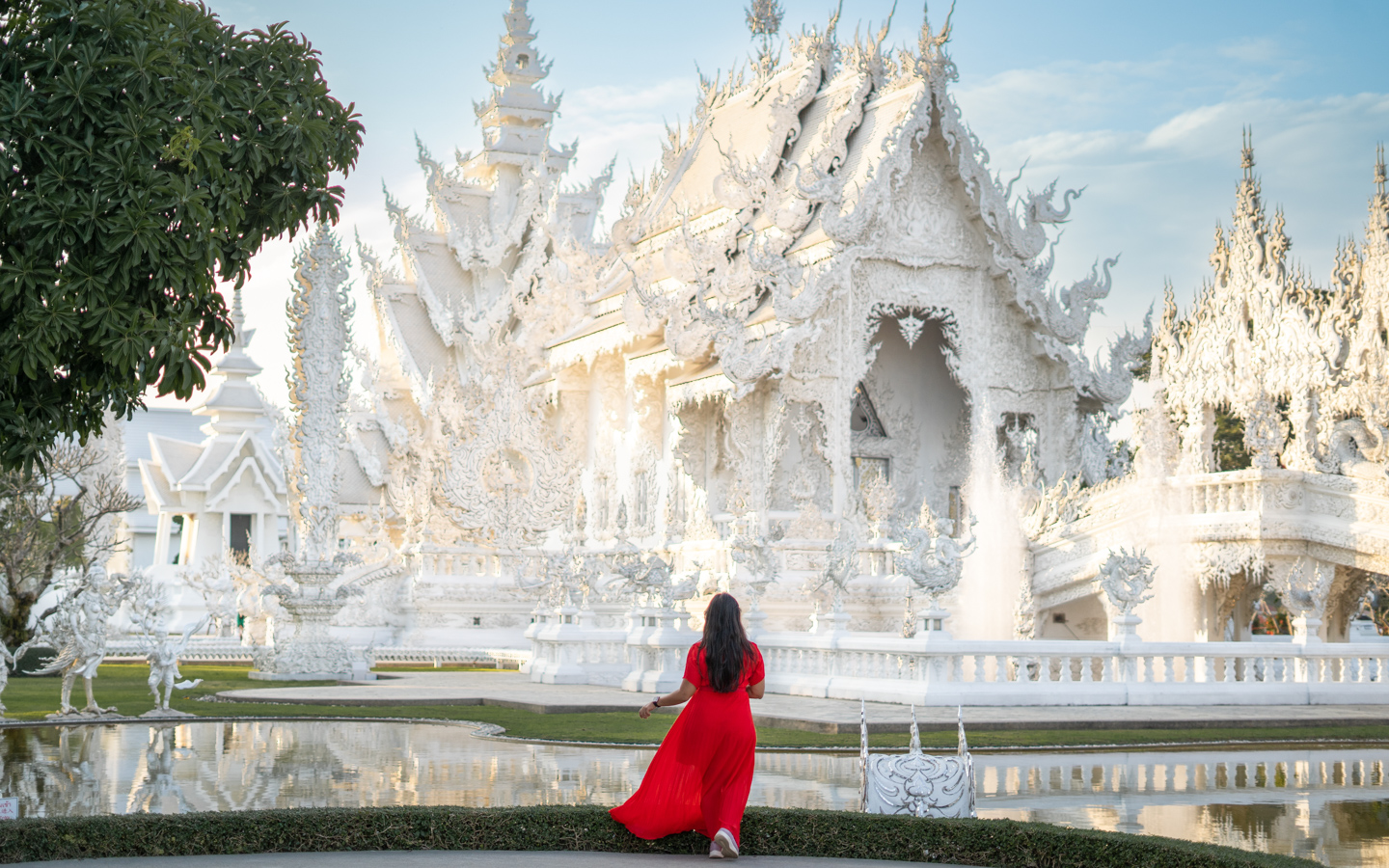If you’re wondering how to plan a trip to Thailand and don’t know where to start, you’re in the right place. This exotic, vibrant Southeast Asian paradise has so much to offer, from lush jungles to warm water beaches to incredible cultural sights. So that you can plan your trip to this incredible country seamlessly, this Thailand travel guide blog post details essential pieces of advice, including the best destinations, itineraries, when to go, what to pack, how to get around, and more. Follow this guide and you’ll be ready to make the most of this beautiful country.
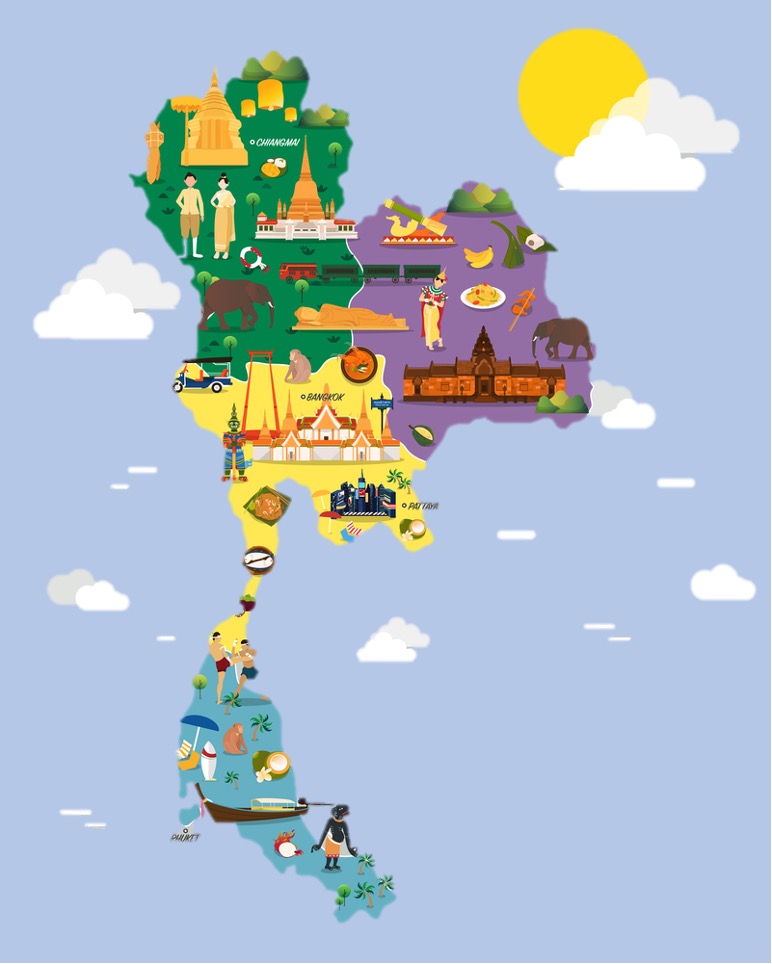
Quick Facts about Thailand
OFFICIAL NAME: Kingdom of Thailand
CAPITAL: Bangkok.
LOCATION: Southeast Asia neighbouring Cambodia, Laos, and Myanmar
OFFICIAL LANGUAGE: Thai
RELIGION: 93.5% Buddhism, 6.5% Islam. You’ll find a lot of influences and references to Hinduism in their architecture. It’s very interesting.
Did know you?
Bankok’s actual name is Krung Thep Mahanakhon Amon Rattanakosin Mahinthara Ayuthaya Mahadilok Phop Noppharat Ratchathani Burirom Udomratchaniwet Mahasathan Amon Piman Awatan Sathit Sakkathattiya Witsanukam Prasit.
Isn’t that insane?!
Best Months to Visit Thailand
Thailand is a large country and the weather varies throughout the year, with different coasts having different weather in the very same month so you need to plan carefully.
| Months | Season |
| November to February | This is peak season. The weather is dry and pleasant, with less humidity. An exception to this is southeast Thailand, which is home to the islands of Koh Samui, Ko Phangan, and Ko Tao. These islands are the rainiest from October through December! |
| April- June | Summer. The temperature soars and touches 40 degrees. Best to avoid. |
| July-September | Monsoon. Heavy rains and high humidity. |
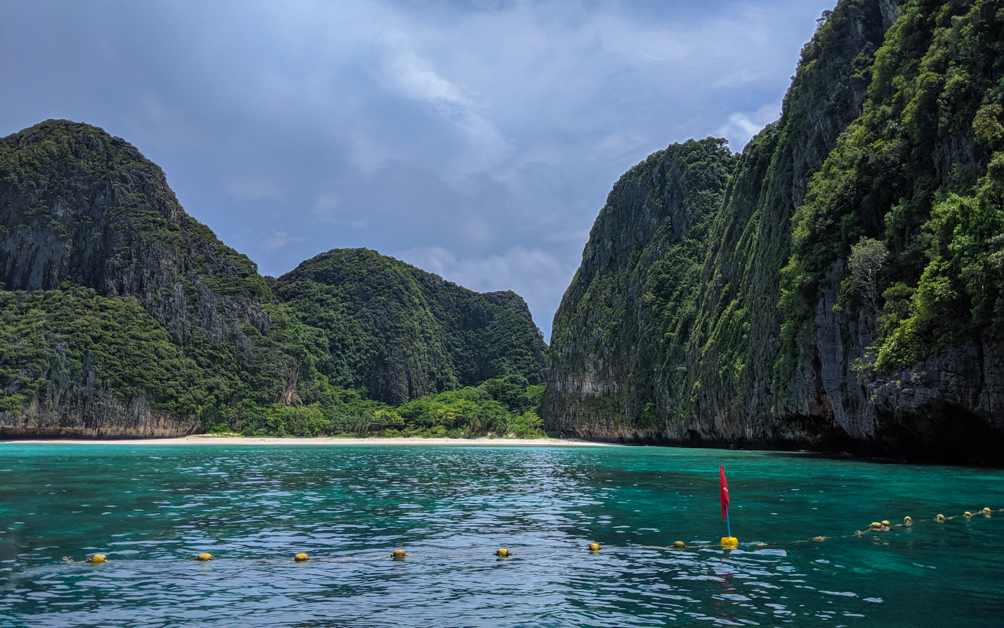
March (even early April) and October are fantastic times to visit, as they’re right at the beginning and end of peak season. Though the weather is fluctuating between the two seasons, it’ll probably be decent—neither too hot in March nor too rainy in October.
However, you may even consider visiting during the two festivals:
I visited Thailand for the first time in late September-early October 2019 and thought the weather was perfect. It rained only once and it was too little to be bothersome in any way. Crowds were comparatively smaller, which was fantastic.
How many days to spend in Thailand?
Thailand is a vast country with much to see! You could stay here for a month or more and still have enough left to see and do. Even after two trips to Thailand of 9 and 13 days, I’m looking forward to going to Thailand again to see all that I missed.
So I’d say, you need at least 2–3 weeks to see enough of Thailand. If you don’t have that kind of free time, you can do a 7–10 day trip and visit again someday.
best Places to Visit in Thailand
These are a few popular places to visit in Thailand. Pick and choose what you like based on your preferences.
We’ve been to places in all regions of Thailand—north, central, and south—and highly recommend visiting them all These are the specific places we’ve been to: Chiang Mai (love it), Chiang Rai (love it), Phuket (twice and will never go again), Krabi (love it!), Kanchanaburi (beautiful nature), and Bangkok (has so much to do).
Northern Thailand
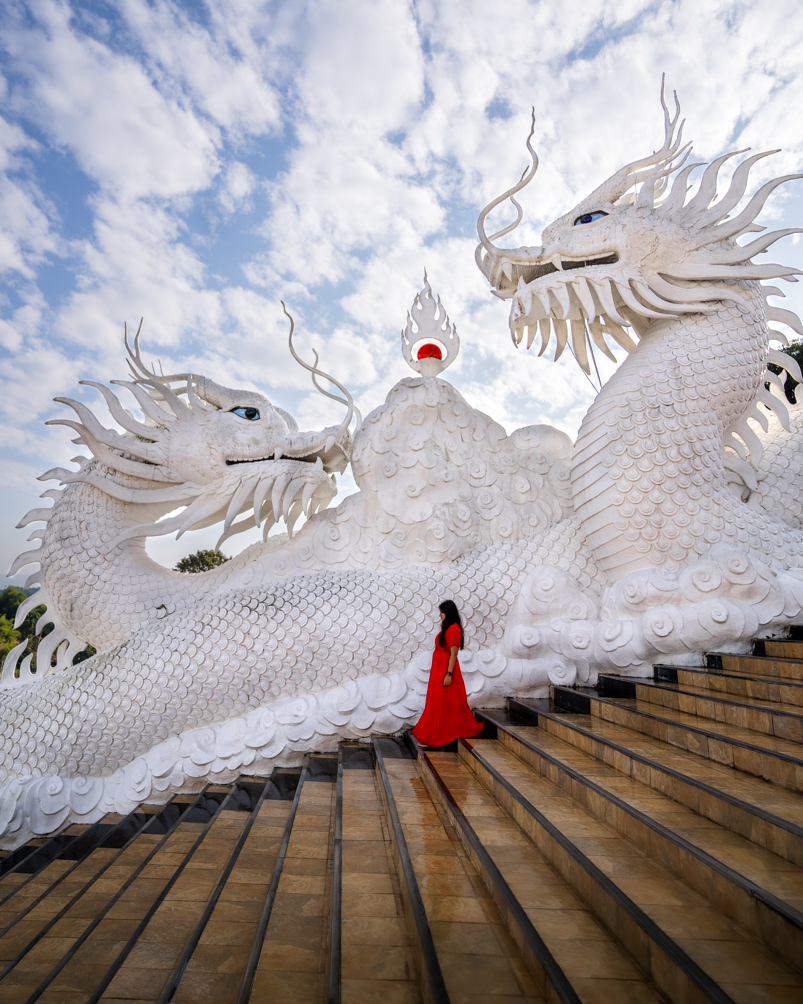
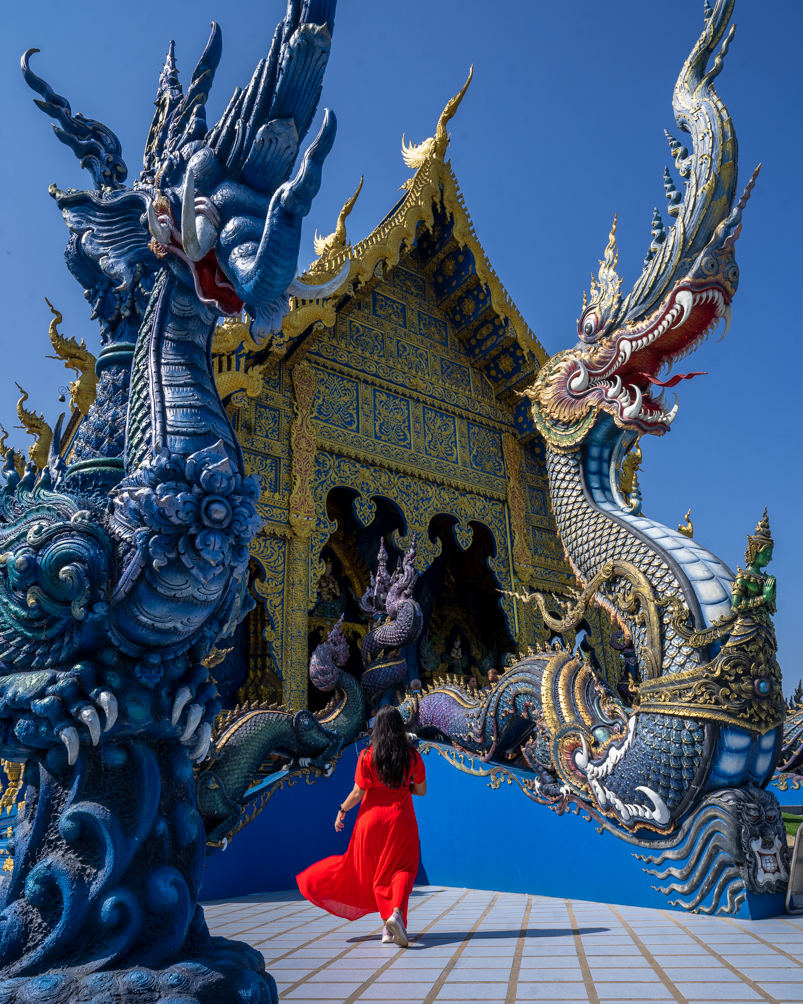
While southern Thailand and Bangkok feature on everyone’s itineraries, Northern Thailand seems to not be as popular (at least amongst us Indians). However, we think Northern Thailand has so much to offer including beautiful hills, the most delicious food and the nicest people. Do add at least Chiang Mai and Chiang Rai to your itinerary for your first Thailand trip.
Chiang Mai: Chiang Mai is all about night markets, street food, historic temples and elephants. It also has concept cafes and hotels.
Chiang Rai: Chiang Rai has the most beautiful temples in all of Thailand. You can’t not see them.
Pai: Pai is a backpacker hub famous for its idyllic scenery and laid-back bohemian vibe. It’s full of natural hot springs.
Phayao: Phayao is a lakeside town full of dreamy mountain views.
Other popular places in Northern Thailand include Nan and Sukhothai.
Central Thailand
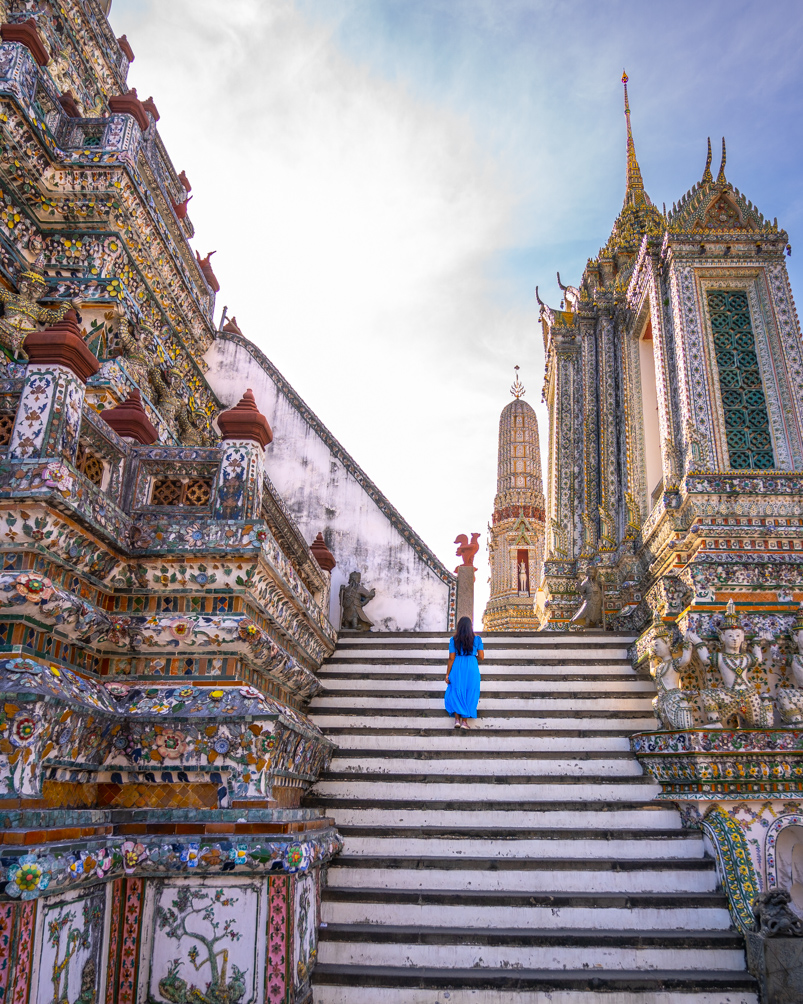
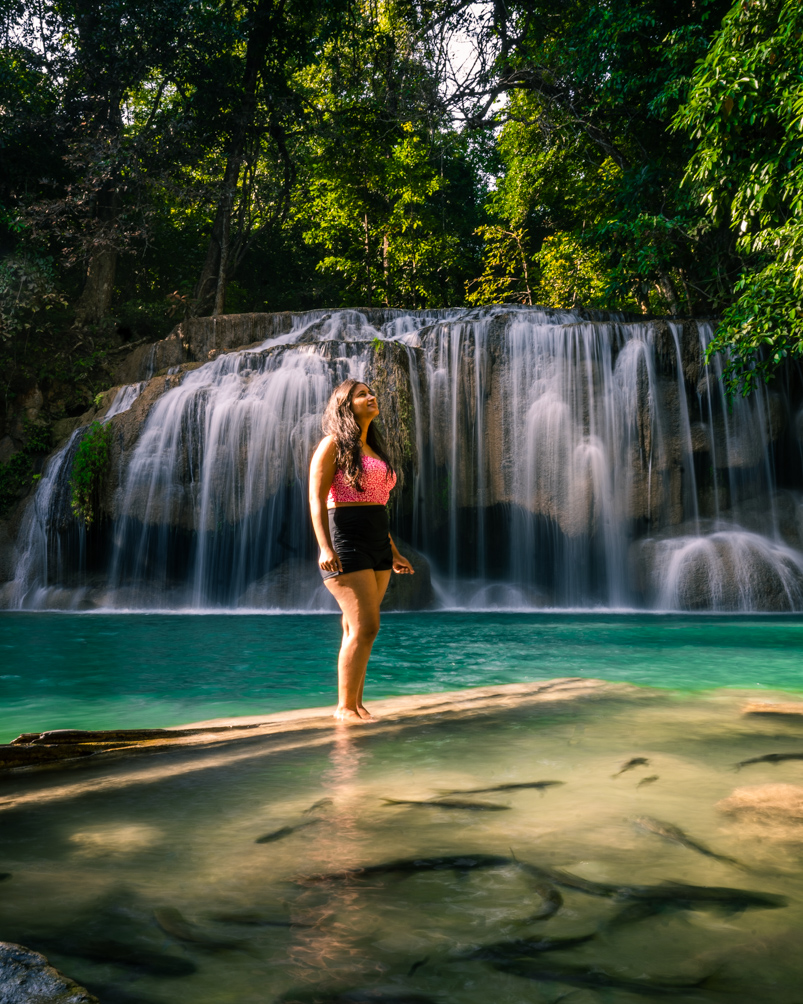
Central Thailand has a lot of history and culture, as it has been home to three capitals of Thailand over the years. You can base yourself in Bangkok and take day trips to Kanchanaburi and Ayutthaya, though we think that Kanchanaburi deserves more time. It is beautiful.
Bangkok: Capital of Thailand, city life, shopping, palace, temples
Kanchanaburi: WWII history, river and mountain views, waterfalls
Ayutthaya: was the seat of the Kingdom of Siam from the 1400s to the 1700s. See old city ruins, Buddhist temples and statues.
South West Thailand
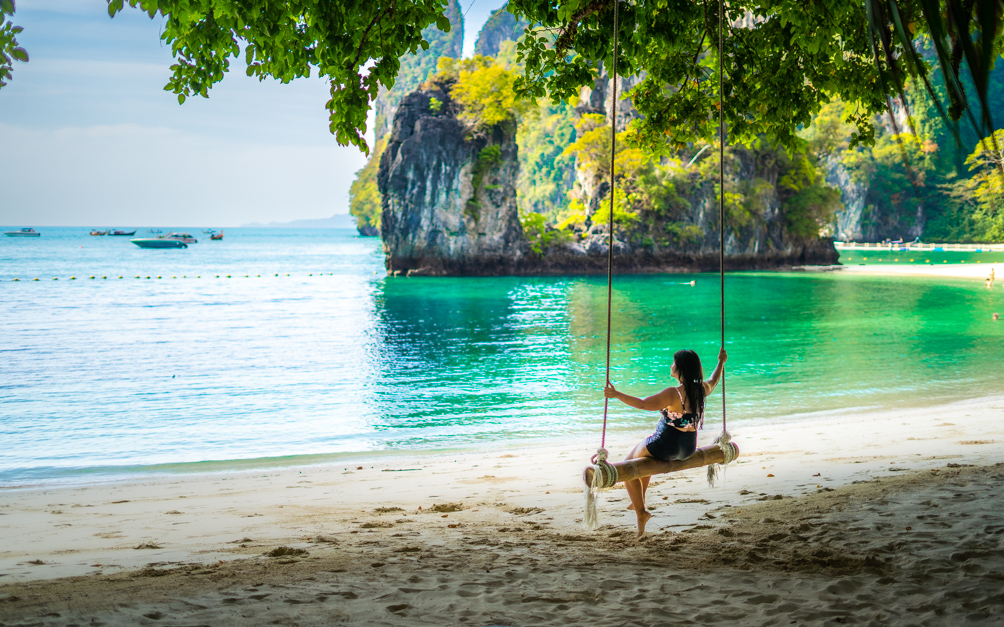
Hello, beaches. No one misses visiting beaches when in Thailand because Thai beaches are wow!! Think white powdery sand, turquoise water, and massive limestone karsts (my favourite bit). Also, there are no better spots to party! Choose 1 or 2 of these locations for your first Thailand trip.
Phuket: Phuket is best for families travelling to Thailand as it has lots of beautiful resorts and is easily accessible by road. Since it has so much to do, you could spend all of your time in Phuket and do day trips to nearby islands.
Krabi and Phang Nga: Just 3 hours from Phuket, Krabi has beautiful beaches and is surrounded by beautiful islands, spectacular viewpoints, kayaking adventures, and tall limestone karsts and islets. I’ve been here twice and can visit again and again.
Phi Phi: Picture perfect islands with limestone cliffs, fine sand beaches, clear water coves, and parties! You can stay in Phi Phi or visit on a day trip from Phuket and Krabi.
Koh Lanta: Just north of Krabi, Koh Lanta has coral-fringed beaches, mangroves, limestone cliffs, and rainforests. It’s much less touristy and, hence, quieter than the above three.
Khao Sok National Park: This national park has large ancient rainforests, towering limestone cliffs, waterfalls, and rare flora & fauna. You can stay in cottages over the water.
Similan Islands: It’s a remote national park offering white-sand beaches & wildlife-rich reefs for diving & snorkelling. It can be done as a day trip from Phuket
South East Thailand
If you love partying and beautiful beaches, then visit these three islands. They’re all close by and, hence, can be done together.
Koh Samui: Beaches, partying, resorts, best for families
Koh Phangan: White-sand beaches. It is mainly known for its monthly Full Moon Party.
Koh Tao: Scenic white sand beaches, coral reefs & scuba diving.
Thailand Trip Itinerary
Here are some itinerary options for you ranging from 5 days to 14. I have grouped the locations by area so travel time is minimal.
5 days for beach bums: Krabi + Koh Lanta/Phuket OR Koh Samui+ Koh Phangan + Koh Tao
7 days for beaches, culture, and shopping: Add Bangkok to the above ( 3 or 4 days at beach destination + 3 or 4 in Bangkok)
10 days for beaches, culture, shopping history, & nature: Add Kanchanaburi/Khao Sok National Park OR Chiang Mai & Chiang Rai
12 days: Add the region you didn’t add above: Kanchanaburi/Khao Sok National Park OR Chiang Mai & Chiang Rai
14 days or more: Add more locations in any region or slow down.
Here’s how we spent our time on our two Thailand trips
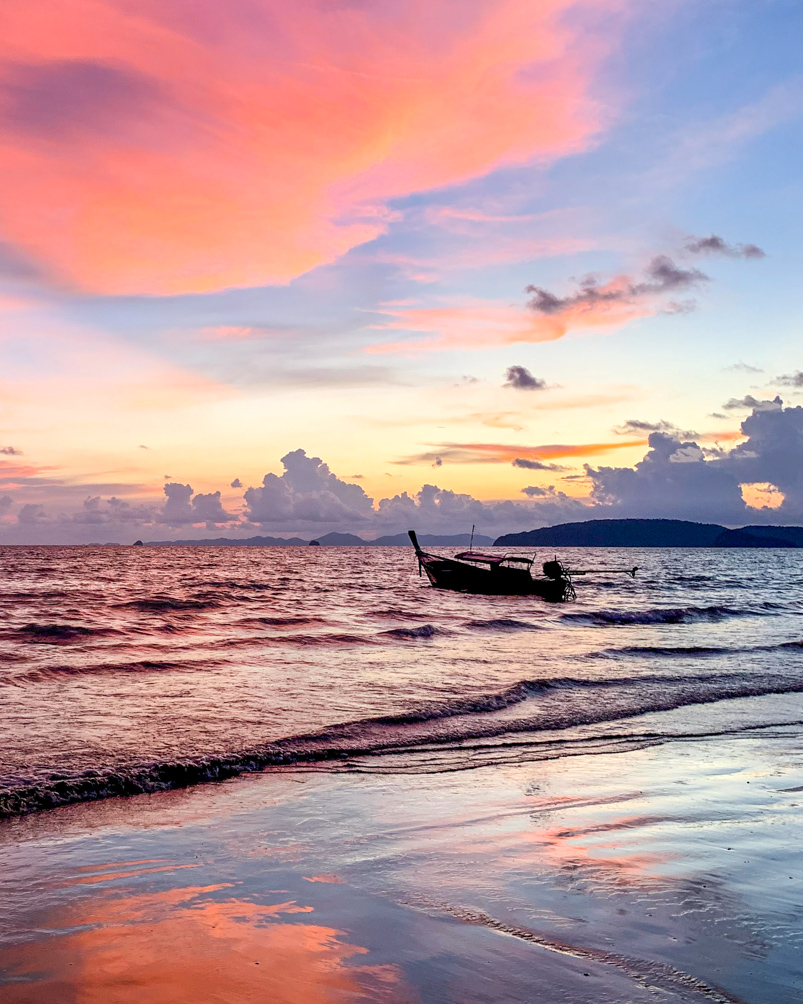

Itinerary of my first trip to Thailand: Phuket (2 days), Krabi (3 days), Bangkok (3 days)
This was my bachelorette trip it was focused on having fun, partying and chilling.
Itinerary of our second trip to Thailand (13 days): Chiang Rai (2 days), Chiang Mai (2 days), Phuket & Phang Nga (1 day), Krabi (2 days), Kanchanaburi (2 days), Bangkok (4 days)
This was a more holistic trip meant to get a better taste of Thailand: beaches, mountains, unique stays, amazing food, beautiful temples, waterfalls, springs, markets, and culture. You name it!
Visa for Thailand
There are three ways to get a Thai Visa if you’re an Indian travelling to Thailand.
Visa on Arrival: You can easily get a visa on arrival for Thailand for THB 2000 (~INR 4900). This is valid for 15 days of stay (extended to 30 days till March 23) and is a single-entry visa. You just need a passport-size photo (white background and facing front), proof of hotel bookings for all days, and proof of return flight. I suggest you keep printed copies in order of stay so that it’s all arranged and easy to understand. This will help save time at the airport.
We found the visa-on-arrival process to be very smooth and fast.
E-Visa on Arrival: It’s such a strange concept but yes, you can get an e-visa on arrival as well. All you have to do is apply on the VFS website. Upload all the documents and make a payment of THB 2500 (~ INR 6000). The process is straightforward, though a bit more expensive and tedious than just going for a regular visa on arrival. It’ll save you a bit of time at the airport in Thailand. That being said, we think sticking to the regular visa-on-arrival process is the way to go!
Tourist Visa: This is the cheapest at INR 2,500 (plus INR 500 for the service fee) but also the most inconvenient option since you must submit documents to the embassy. It is the best option if you’re going to Thailand for more than 30 days (up to 60 days) or need a multi-entry visa (a multi-entry visa costs ~INR 12,000). You can also get a transit visa through this option. See the process and documents on the VFS website.
How to get around Thailand
Here are the four main ways to get around Thailand.
Flights: Flights in Thailand are the most convenient way to get around. You can easily check and book flights on Skyscanner for the cheapest fares. Do note that flights in Thailand usually do not have checked-in luggage included in the fare. You have to pay extra for that. Costs on average: INR 3000-5000 per person per flight
Bus/Van: Buses and vans (minibuses) are fantastic and cheap transport options in Thailand. Just book them off 12Go or at the ticket counter at the bus stop. Do pre-book your bus tickets during peak season (November-February) because buses on certain popular routes get sold out! During shoulder or low season, you can check timings on 12Go and book at the ticket counter accordingly. Also, if you’re planning to travel by bus/ van, then pack light. Minivans literally have no storage space. Read this post on ‘What to Pack for Thailand‘ for more details.
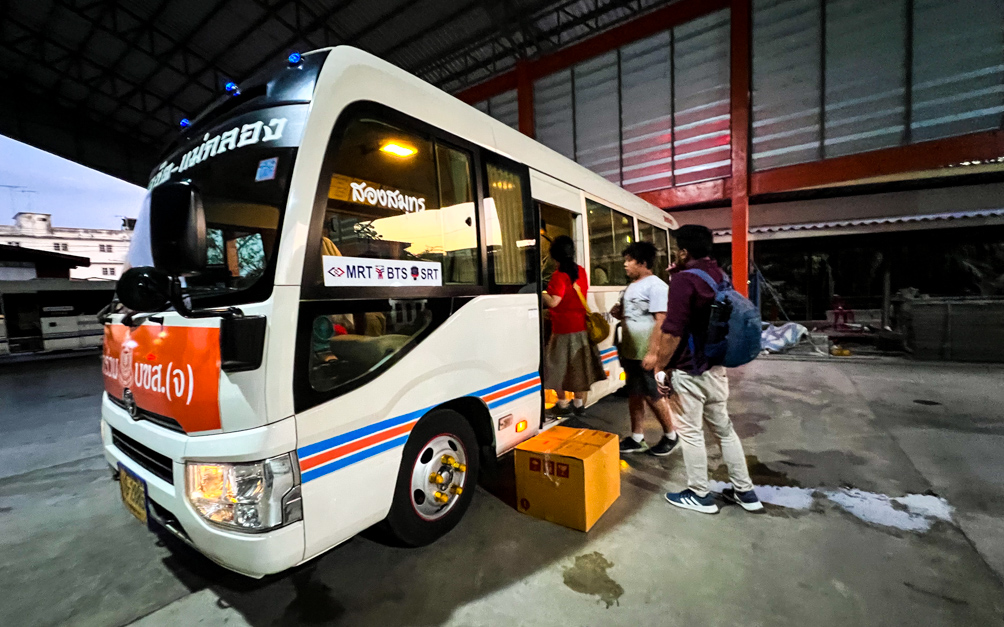
Train: Trains are another excellent way to get around Thailand, especially for long distances like Bangkok to Chiang Mai. We didn’t use the train system so can’t comment on how comfortable the trains are. These, too, can easily be booked on 12Go.
Rental Car: You might need to rent a car at times if you need to visit places off the beaten path. Though not cheap, it may actually turn out to be less expensive than taxis in a lot of cases. You can compare prices before renting. You need an International Driving Permit to rent a car in Thailand legally. However, you will be handed the car by the rental company even if you don’t have an IDP and if you’re stopped by the police, you will have to pay a fine. That being said, we rented a car twice through Discover Cars (in Chiang Mai and in Phuket/Krabi) and never got pulled over.
Check rentals on Discover Cars
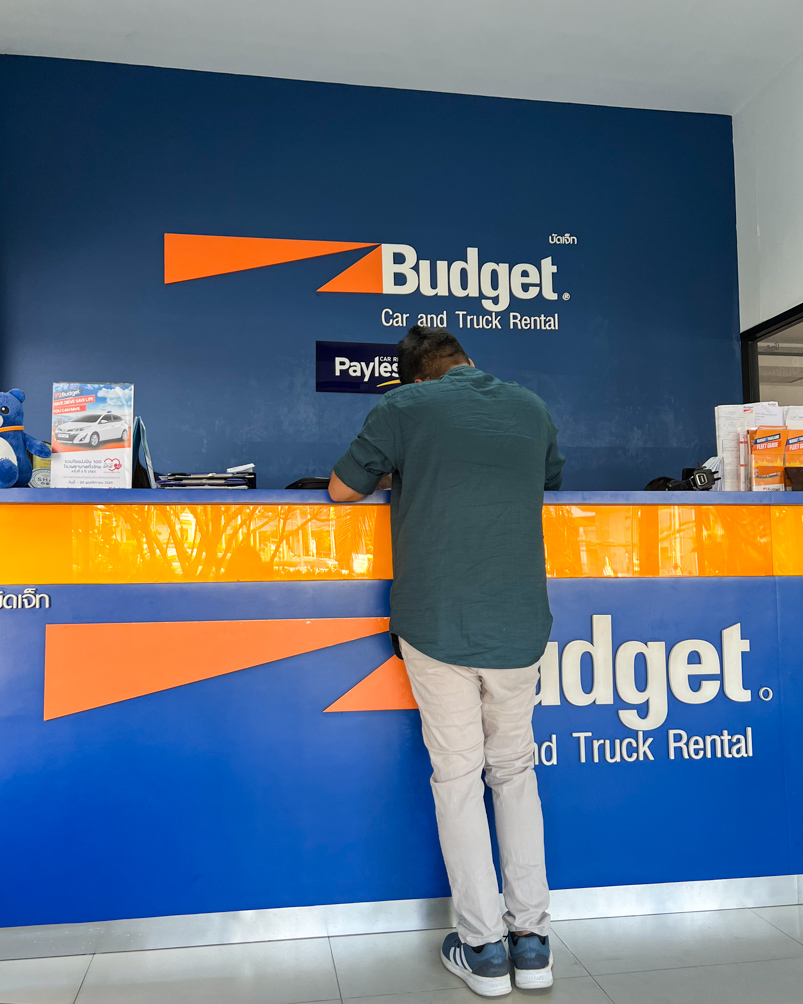
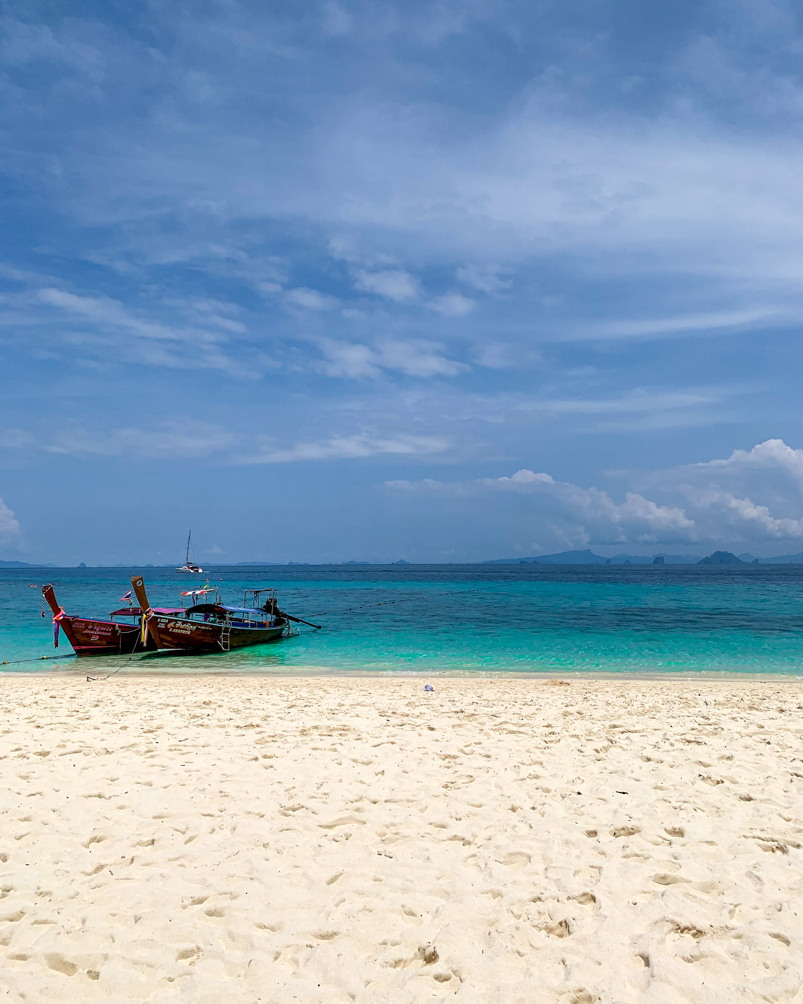
Ferry: You can go to islands like PhiPhi, Koh Lanta, Koh Samui, Koh Phangan and Koh Tao via ferry. In some cases, these will be the only ways to reach the island. You can also go shorter distances/island hop via the traditional long-tail Boats (can be hired on the beach) or speed boats (can be hired through local travel agencies). INR 500-1500 depending on the route.
How to get around the cities in Thailand
You’ve got a lot of options to get around.
Taxi: Most places in Thailand have Grab (like Uber). Some cities even have InDrive and Bolt, which can turn out to be cheaper than Grab. Download all three apps and keep them handy because prices will (in all probability) be lower than what the local taxi guys charge. On buying a SIM card at the airport, you’ll also get Grab discount codes applicable on your first few rides, don’t forget to use it. An average ride costs about INR 300.
Metro (MRT) and Sky Train (BTS): Bangkok has an extensive MRT and BTS system that’ll save you a lot of money getting around. We found the system very easy to use. To understand the routes and stations, just enter your destination in Google Maps like you normally would and switch to public transport. The routes given by maps are very accurate!
Tuktuks: Most places have tuk-tuks, which are very easy to hire right from the road. Just remember that you’ll need to bargain a lot because they can try to rip you off, especially in tourist areas. You can also book these on Grab.
Songthaew: Songthaews are huge tuk-tuks (mostly red in colour) that can accommodate about 8–10 people. They charge a very minimal fare and work almost like Uber Share. These don’t follow a specific route, like a bus but go wherever you want to and take the optimal route based on all the passenger’s destinations.
Tip: If you ride these in Chiang Mai, don’t ask for the fare, as you’ll be charged taxi prices. Any trip within the city will cost about THB 30.
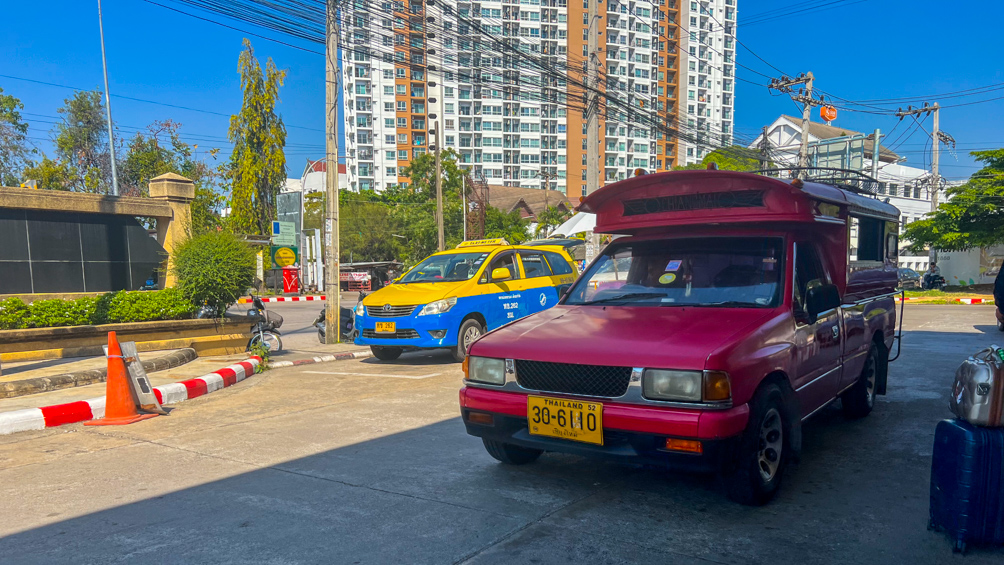
Bus: We never took a bus to get around a city but it’s something you can consider if you’re on a low budget.
Rental Bike: Bike rentals are really inexpensive, at about THB 200–300 a day. Just head to a local shop renting them, give them your passport or a minimal deposit (about 1000 baht) and zoom away with your bike.
Rental Car: You can also rent a car to get around. While this is a fantastic option for regions like Phuket, Krabi and Chiang Mai since distances can be large between popular sights and stays, I don’t recommend it for a city like Bangkok. It’s very expensive here and you’ll be stuck in traffic forever! INR 2000–3000 per day (if you return the vehicle to the same place). (An extra charge is levied if you return to another location). Book on RentalCars for low prices.
Currency
Thai Currency is the Thai Baht.
1 US dollar equals 35.31 Baht. See the latest rates here.
1 Indian rupee equals 0.43 Baht. See the latest rates here.
Currency to carry: It is best to carry Baht from your home country (at least this is the case for India). If the Thai baht isn’t available in your home country at good rates, then carry US dollars and exchange them for Thai Baht in Thailand itself. Just do not do this at the airport, as the exchange rates are the worst!
Avoid withdrawing from ATMS: Do carry enough Baht or US dollars to change into Thai Baht because ATM withdrawals aren’t the best option in Thailand. Each withdrawal will cost you about THB 100–200, which is a lot! Instead, you can go to a bank to withdraw money if you’re in such a situation, since there are no extra charges.
Thailand Budget Breakdown & Tips to save money
Thailand is a destination for all budgets. It can be dirt cheap or super expensive, depending on the choices you make. Your budget will vary significantly for hotels and activities depending on the season of travel, with the highest during the peak season and lowest during low season. I’m just going to give you some general costs below so you get an idea. These are just approximations and your costs could look entirely different.
Backpacker
Visa: THB 2000 ~ INR 4,900
Round-trip Trip Flight ticket (from India): 15,000 (typically ranging from 11,000-25,000)
Bed in a Hostel: INR 900
Food (street food): INR 600
Local transport (songthaews and grab bikes): INR 400
Buses between cities: INR 350-600 for short-distance cities
Activities: INR 500
Miscellaneous (sim, shopping, snacks): INR 200
Total Variable expenditure per day: avg. 3,000 per day
Total for 7 days: INR 41,000
Total for 10 days: INR 50,000
Mid-Range
Visa: THB 2000 ~ INR 4,900
Round-trip Trip ticket (from India): 15,000 (typically ranging from 11,000-20,000)
Hotel room: INR 4,200
Food (street food & restaurants): INR 1,500
Local transport (cabs): INR 800
Buses: INR 350-600 for short-distance cities
Activities: INR 1000
Miscellaneous (sim, shopping, snacks): INR 500
Variable expenditure per day: INR 8,500
Total for 7 days: INR 79,000
Total for 10 days: INR 1,05,000
Do note that some days you will not be taking transport and some days you may not be doing any activities. So these amounts calculated will ultimately balance out for other things you do.
Mid-Range to Luxury
Luxury trips could cost anything but compared to other countries in the world, even a luxury trip will be significantly cheaper for the quality of service and probably even superb views. Here are the general costs for a luxurious trip!
Visa: THB 2000 ~ INR 4,900
Round-trip tickets from India: 20,000 (typically ranging from 11,000-20,000)
Luxury Hotel: INR 12,000
Food (restaurants & bars): INR 5,000
Local transport (cabs): INR 2,000
Flights between cities/car rental/cabs: INR 4,000
Activities (private tours & entry): INR 3,000
Variable expenditure per day: INR 23,000
Total for 7 days: INR 1,86,000
Total for 10 days: INR 2,55,000
Food in Thailand
Thailand has a reputation for its unique and exotic flavours, from sweet and sour dishes to the spiciness of its curries. And don’t get me started on the variety on offer. You simply won’t be able to taste everything on one trip.
The best bit is that food in Thailand can be really inexpensive if you eat street food. It costs about INR 200–300 per person.
While the food in cafes and restaurants can be expensive, a meal for one person would cost about INR 800 per person (1 main course, 1 drink)
Food for vegetarians: Contrary to popular belief, you can find good Thai food even if you’re vegetarian. A lot of restaurants (especially in tourist areas) have a vegetarian menu or at least a few vegetarian items. If not, ask them for a Thai dish like a green curry without meat, chicken, fish, or fish oil. We did this quite a few times and really enjoyed the food we ate. Also, look for restaurants on Tripadvisor, Google and Happy Cow.
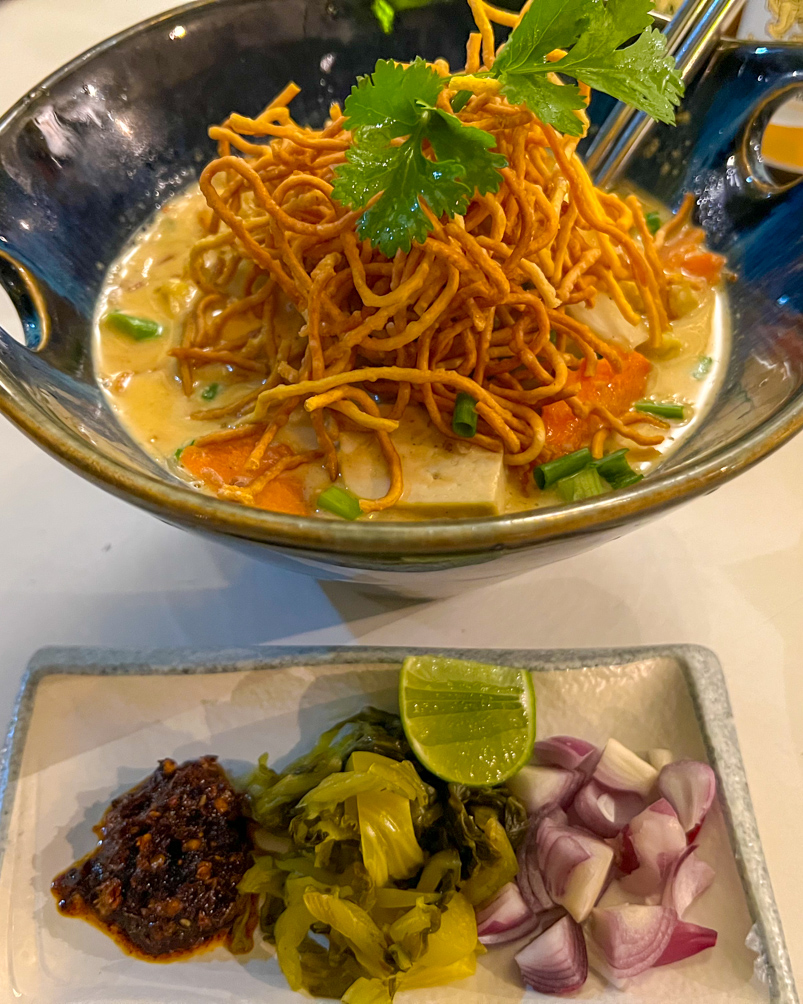
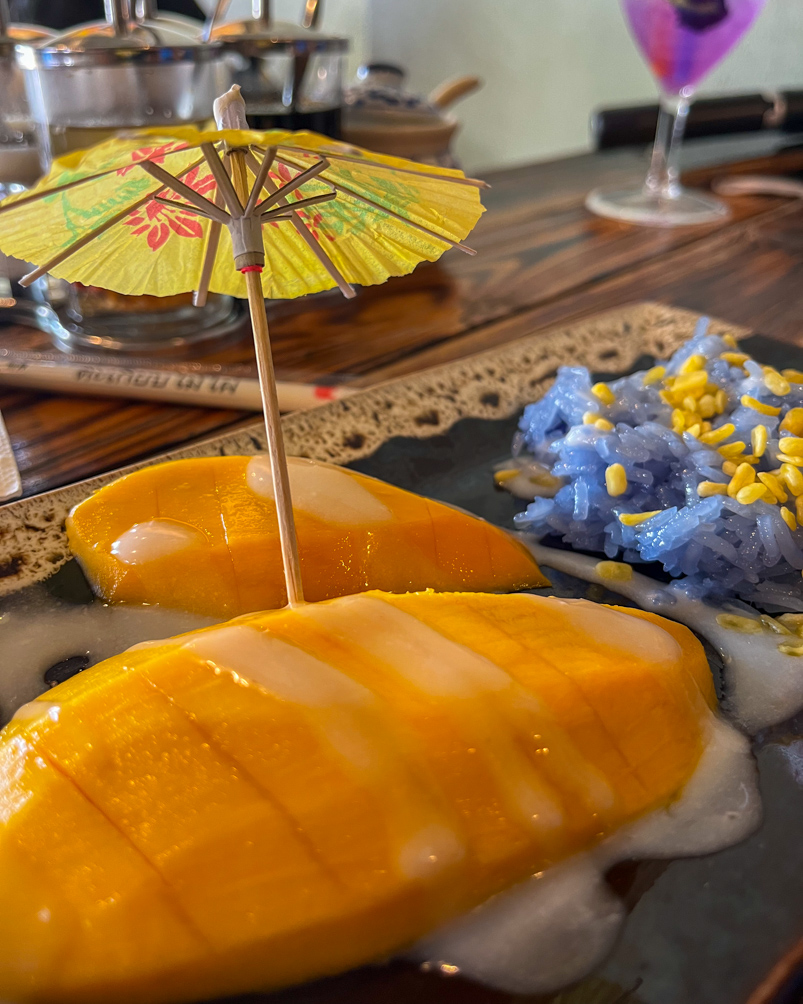
Here are some dishes we tried and loved:
- Pad Thai (fried noodles): A classic stir-fried noodle dish served with sprouts, crushed peanuts and condiments. It is the national food of Thailand.
- Khao Soi (noodle soup): a creamy coconut soup with noodles topped with crispy noodles and served with condiments. You must eat this in North Thailand.
- Som Tam (salad): Spicy green papaya salad
- Panang (Thai Curry): Mild coconut curry that is eaten with rice
- Gaeng Keow Wan (Green Curry): The spiciest of all the curries
- Masaman (Red Curry): Rich but mild curry
- Gaeng Som (Yellow Curry): Mild curry
- Pad Krapow (Spicy Basil Chicken): The chicken is served with rice and fried eggs. Too tasty.
- Kao Niew Ma Muang (Mango and Sticky Rice): A dessert you’ll want to eat after every meal
- Thai Tea: Thai tea is strongly-brewed black tea sweetened with sugar and condensed mild. It is often spiced with spices like star anise, tamarind, cardamom, etc. and is served iced or hot. It has a weird orange colour but is very tasty.
These items are usually available in all local restaurants. All of these are vegetarian-friendly, except Pad Krapow.
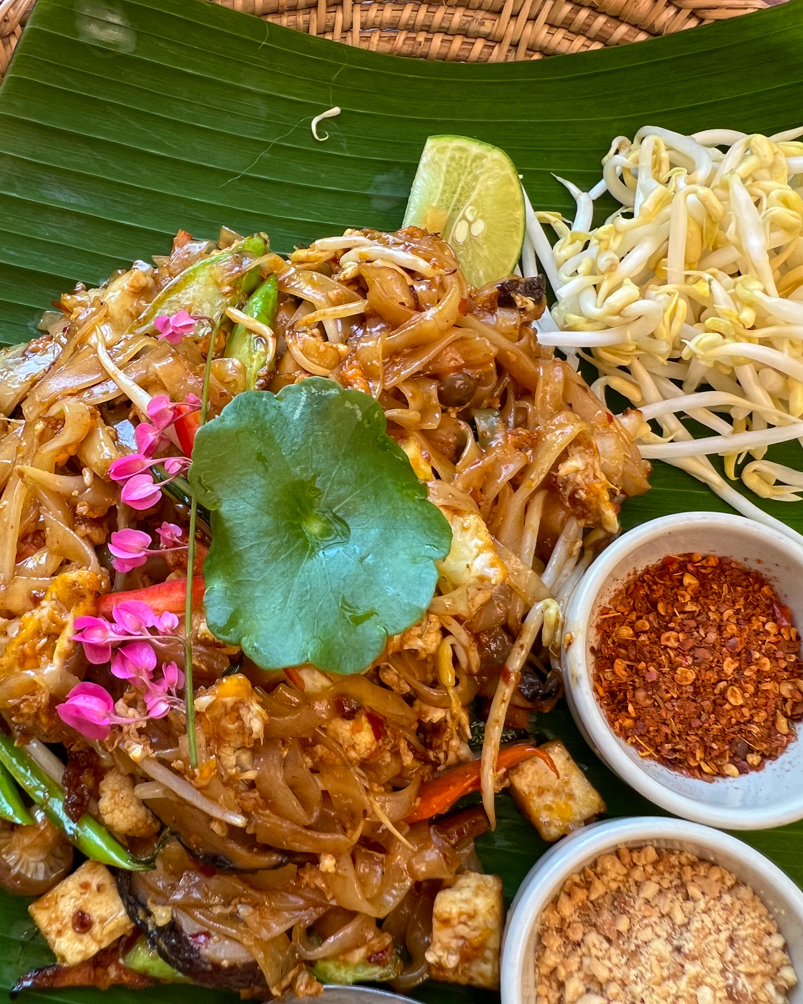
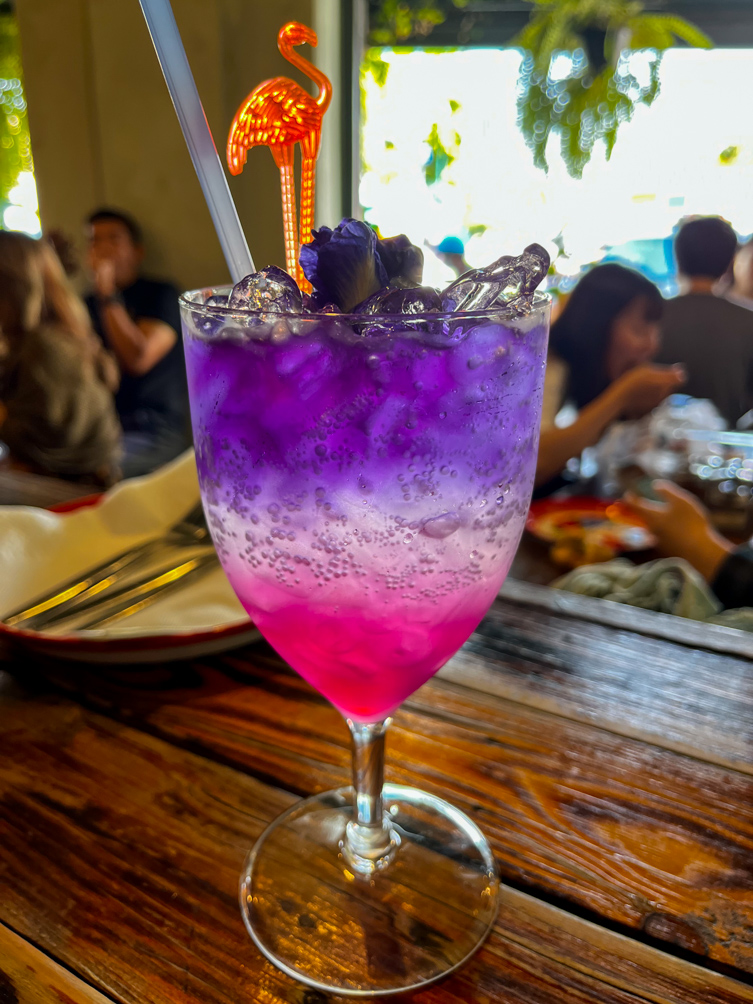
Language
Thai is a beautiful language to listen to and is spoken in a sing-song manner, which I find very fascinating. Thai people add a gender marker at the end, meaning females always finish their sentences with the word Ka (khaa), and males with Krup (khrap). Both sound very similar. But you’ll find locals adding it to English words as well, like ‘Thank You Khaa’.
A lot of people in Thailand can speak English but many can’t. Especially when you’re travelling more off the beaten path.
It is best to keep Google Translate downloaded along with the Thai language so you can translate even without the internet. If you’ve never used a translation app before do practise at home before leaving for your trip.
Here are some Thai words you’ll hear often and should know.
Kawp Koon (pronounced Khopun khaa): Thank You
Sawadee (pronounced Swadee khaa): Hello
Learn more helpful words here.
What to Carry
A lot of people assume at going to a tropical destination means carrying just short cute dresses and shorts. That is so not true for Thailand. For a complete list of essential clothes and accessories to carry, read our Ultimate Packing List for Thailand.
Best apps for bookings
Flights: Book at the lowest rates through Skyscanner
Hotels: Agoda offers the lowest prices in South East Asia. But do also check Booking.com.
Hostels: Book through Hostelworld.
Activities: Best to do a price comparison between Viator and Klook
Rental Cars: Discover Cars and RentalCars offer great prices
Transport: Book trains, buses, and ferries on 12Go
Taxis: Keep Grab, Bolt, and InDrive apps downloaded. Do a price comparison before booking.
TripIt: Keep all your flight, hotel and activity bookings details in one place
With all of this in mind, you are sure to have an amazing experience in Thailand. Pack your bags and get ready to explore this captivating country – you won’t be disappointed!!
Let us know if you have any further questions on how to plan a trip to Thailand. Will be happy to answer.
Some of the links in this Ultimate Thailand Travel Guide blog post are affiliate links. We may earn a commission if you make a purchase by clicking through them. This will be at no additional cost to you. We only recommend products that we use ourselves and that might be beneficial for you.

